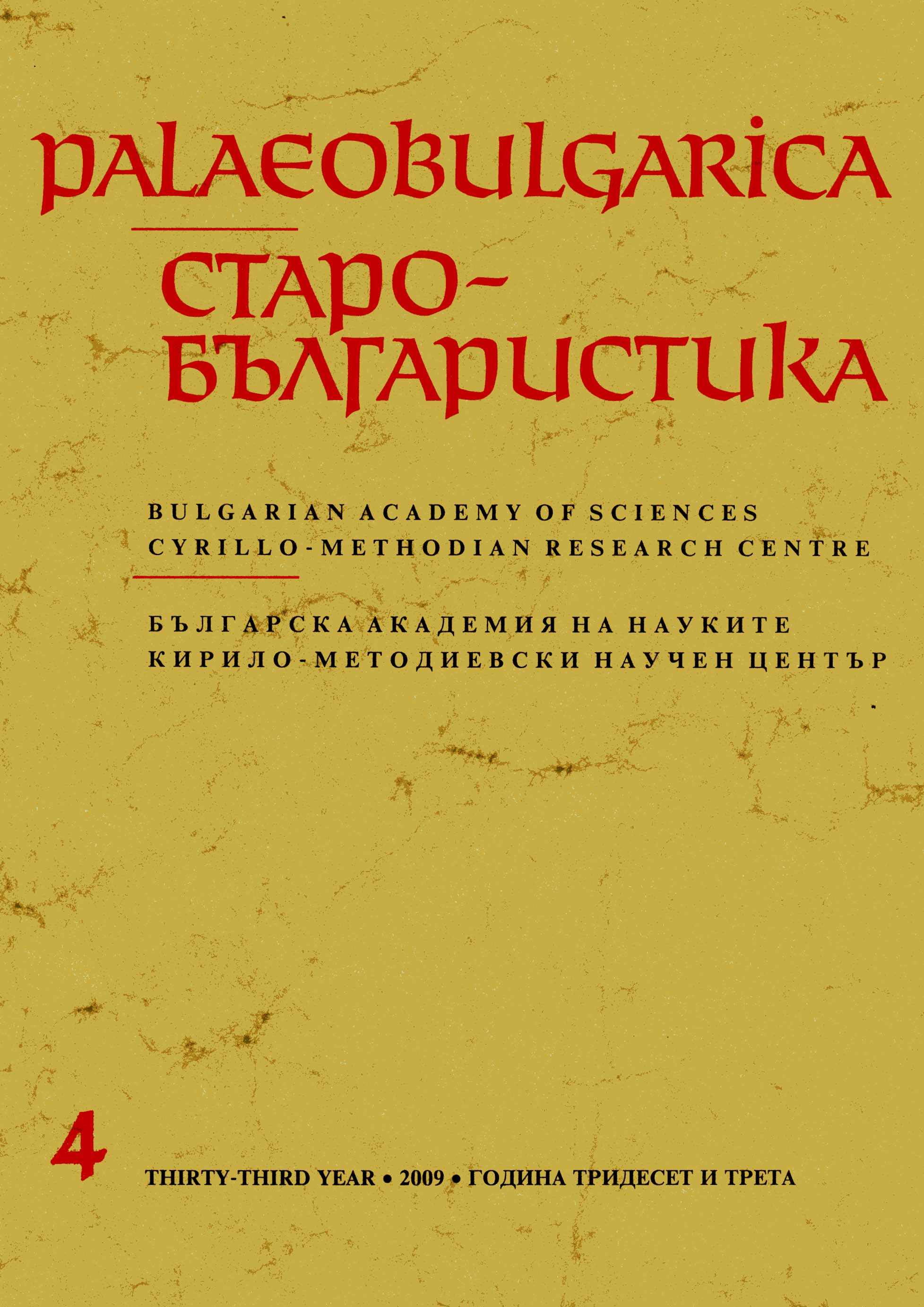Древнеславянский канон первоучителю Кириллу: источники и реконструкция (песнь шестая)
The Old Church Slavonic Canon to Cyril, the First Teacher: Its Sources and Reconstruction (Ode Sixth)
Author(s): Vadim KryskoSubject(s): Language and Literature Studies
Published by: Кирило-Методиевски научен център при Българска академия на науките
Summary/Abstract: On the basis of a collation of the verified text of all the 25 copies of the Old Church Slavonic canon in honour of Cyril the Philosopher the article provides a critical edition and a study of the four troparia that constitute the sixth ode of the canon (at the same time fixing all significant variant readings), reconstructs their original text and provides a linguistically substantiated translation of the troparia into Modern Russian. The study of the hymns devoted to Cyril on the background of Byzantine hymnography corroborates the supposition voiced earlier to the effect that the canon is a translation from a Greek original that has not come down to us. This hypothetical original is reconstructed for every troparion. The original stichometric appearance of the troparia that are discussed is established by means of comparing the stichometric structure of the canon with the Greek models on the basis of isosyllabism. The comparative linguistic and stichometric analysis of the conflicting data from all copies and Greek sources makes it possible to elucidate a number of “obscure places” in the text of the sixth ode: thus for живощихъ, which is the reading of most copies, живенщихъ life-giving' can be reconstructed, instead of имена and other corrupted readings it is the vocative именьне glorious'. There is additional evidence for the fact that the canon in honour of Cyril is the work of a Greek author that combined troparia of different origin. However, in creating the sixth ode the author has been able to meet the main criterion imposed by the chosen genre – to retain the unity of the ode and the canon as far as content and form are concerned. On the one hand, all the usual troparia of the ode (the first two to a larger and the third to a considerably lesser extent) show a link with the life of the saint and in this case the text reveals an intermediate theme, which is already manifest in the two preceding odes, viz. the theosis of man, which is possible due to God's grace and man's own activity aimed at imitating Christ. On the other hand, the unity of form in the ode and the canon is provided by the acrostic of which the sixth ode shows the letters ΤΩΦΙ, which correspond to the article and the first syllable for the dative form τω Φιλοσόφω. The stichometric analysis allows for the onclusion that the strict adherence to one single metric and melodic model was not an obligatory condition for the composition of an ode: for the initial two troparia an original similarity to the heirmos Θύσω σοι can be reconstructed; for the third troparion and the theotokion it is the heirmos Ηλθον ейς τά βάθη τ\ς θαλάσσης. In the Slavonic tradition the text of the sixth ode originally retained its link with the different heirmoi, but later (already during the time of the early stages of existence) the text was adapted (by means of insignificant changes) to the scheme of the heirmos Ηλθον ί;ϊς τά βάθη (Придъ въ глобины)
Journal: PALAEOBULGARICA / СТАРОБЪЛГАРИСТИКА
- Issue Year: 2009
- Issue No: 4
- Page Range: 3-59
- Page Count: 57
- Language: Russian
- Content File-PDF

